Design of a Dual-Purpose Patch Antenna for Magnetic Resonance Imaging and Induced RF Heating for Small Animal Hyperthermia
Abstract
:1. Introduction
2. Methods
2.1. Patch Antenna without Size Reduction
2.2. Patch Antenna with Size Reduction
2.3. Simulation Setup
3. Results
3.1. Phantom Simulations
3.2. Rat Simulations
4. Conclusions
Author Contributions
Funding
Institutional Review Board Statement
Informed Consent Statement
Data Availability Statement
Conflicts of Interest
References
- Hoyer, C.; Gass, N.; Weber-Fahr, W.; Sartorius, A. Advantages and Challenges of Small Animal Magnetic Resonance Imaging as a Translational Tool. Neuropsychobiology 2014, 69, 187–201. [Google Scholar] [CrossRef]
- Jonckers, E.; Shah, D.; Hamaide, J.; Verhoye, M.; Van der Linden, A. The Power of Using Functional fMRI on Small Rodents to Study Brain Pharmacology and Disease. Front. Pharmacol. 2015, 6, 231. [Google Scholar] [CrossRef] [PubMed] [Green Version]
- Hjornevik, T.; Leergaard, T.B.; Darine, D.; Moldestad, O.; Dale, A.M.; Willoch, F.; Bjaalie, J.G. Three-Dimensional Atlas System for Mouse and Rat Brain Imaging Data. Front. Neuroinform. 2007, 1, 4. [Google Scholar] [CrossRef] [PubMed] [Green Version]
- Dam, C.; Lindebjerg, J.; Jakobsen, A.; Jensen, L.H.; Rahr, H.; Rafaelsen, S.R. Local Staging of Sigmoid Colon Cancer Using MRI. Acta Radiol. Open 2017, 6, 2058460117720957. [Google Scholar] [CrossRef]
- Harms, S.E. MRI in Breast Cancer Diagnosis and Treatment. Curr. Probl. Diagn. Radiol. 1996, 25, 193–215. [Google Scholar] [CrossRef]
- Cheng, W.; Ping, Y.; Zhang, Y.; Chuang, K.H.; Liu, Y. Magnetic Resonance Imaging (MRI) Contrast Agents for Tumor Diagnosis. J. Healthc. Eng. 2013, 4, 23–45. [Google Scholar] [CrossRef] [PubMed] [Green Version]
- Jhaveri, K.S.; Hosseini-Nik, H. MRI of Rectal Cancer: An Overview and Update on Recent Advances. Am. J. Roentgenol. 2015, 205, W42–W55. [Google Scholar] [CrossRef] [PubMed]
- Wyatt, C.; Soher, B.; Maccarini, P.; Charles, H.C.; Stauffer, P.; MacFall, J. Hyperthermia MRI Temperature Measurement: Evaluation of Measurement Stabilisation Strategies for Extremity and Breast Tumours. Int. J. Hyperth. 2009, 25, 422–433. [Google Scholar] [CrossRef]
- Stakhursky, V.L.; Arabe, O.; Cheng, K.S.; MacFall, J.; Maccarini, P.; Craciunescu, O.; Dewhirst, M.; Stauffer, P.; Das, S.K. Real-Time MRI-Guided Hyperthermia Treatment Using a Fast Adaptive Algorithm. Phys. Med. Biol. 2009, 54, 2131–2145. [Google Scholar] [CrossRef] [PubMed]
- Curto, S.; Aklan, B.; Mulder, T.; Mils, O.; Schmidt, M.; Lamprecht, U.; Peller, M.; Wessalowski, R.; Lindner, L.H.; Fietkau, R.; et al. Quantitative, multi-institutional evaluation of MR thermometry accuracy for deep-pelvic MR-hyperthermia systems operating in multi-vendor MR-systems using a new anthropomorphic phantom. Cancers 2019, 11, 1709. [Google Scholar] [CrossRef] [Green Version]
- Sumser, K.; Bellizzi, G.G.; van Rhoon, G.C.; Paulides, M.M. The potential of adjusting water bolus liquid properties for economic and precise MR thermometry guided radiofrequency hyperthermia. Sensors 2020, 20, 2946. [Google Scholar] [CrossRef]
- Bing, C.; Nofiele, J.; Staruch, R.; Ladouceur-Wodzak, M.; Chatzinoff, Y.; Ranjan, A.; Chopra, R. Localised Hyperthermia in Rodent Models Using an MRI-Compatible High-Intensity Focused Ultrasound System. Int. J. Hyperth. 2015, 31, 813–822. [Google Scholar] [CrossRef] [PubMed]
- Prasad, B.; Kim, S.; Cho, W.; Kim, J.K.; Kim, Y.A.; Kim, S.; Wu, H.G. Quantitative Estimation of the Equivalent Radiation Dose Escalation Using Radiofrequency Hyperthermia in Mouse Xenograft Models of Human Lung Cancer. Sci. Rep. 2019, 9, 3942. [Google Scholar] [CrossRef] [PubMed] [Green Version]
- Curto, S.; Faridi, P.; Shrestha, T.B.; Pyle, M.; Maurmann, L.; Troyer, D.; Bossmann, S.H.; Prakash, P. An integrated platform for small-animal hyperthermia investigations under ultra-high-field MRI guidance. Int. J. Hyperth. 2018, 34, 341–351. [Google Scholar] [CrossRef] [PubMed]
- Adibzadeh, F.; Sumser, K.; Curto, S.; Yeo, D.T.B.; Shishegar, A.A.; Paulides, M.M. Systematic review of pre-clinical and clinical devices for magnetic resonance-guided radiofrequency hyperthermia. Int. J. Hyperth. 2020, 37, 15–27. [Google Scholar] [CrossRef]
- Gasinska, A.; Hill, S. The Effect of Hyperthermia on the Mouse Testis. Neoplasma 1990, 37, 357–366. [Google Scholar] [PubMed]
- Demura, K.; Morikawa, S.; Murakami, K.; Sato, K.; Shiomi, H.; Naka, S.; Kurumi, Y.; Inubushi, T.; Tani, T. An Easy-to-Use Microwave Hyperthermia System Combined with Spatially Resolved MR Temperature Maps: Phantom and Animal Studies. J. Surg. Res. 2006, 135, 179–186. [Google Scholar] [CrossRef]
- Winter, L.; Oezerdem, C.; Hoffmann, W.; van de Lindt, T.; Periquito, J.; Ji, Y.; Ghadjar, P.; Budach, V.; Wust, P.; Niendorf, T. Thermal magnetic resonance: Physics considerations and electromagnetic field simulations up to 23.5 Tesla (1 GHz). Radiat. Oncol. 2015, 10, 1–12. [Google Scholar] [CrossRef] [PubMed] [Green Version]
- Paulides, M.M.; Mestrom, R.M.C.; Salim, G.; Adela, B.B.; Numan, W.C.M.; Drizdal, T.; Yeo, D.T.B.; Smolders, A.B. A printed Yagi-Uda antenna for application in magnetic resonance thermometry guided microwave hyperthermia applicators. Phys. Med. Biol. 2017, 62, 1831–1847. [Google Scholar] [CrossRef] [PubMed]
- Lodi, M.B.B.; Muntoni, G.; Ruggeri, A.; Fanti, A.; Montisci, G.; Mazzarella, G. Towards the Robust and Effective Design of Hyperthermic Devices: Case Study of Abdominal Rhabdomyosarcoma with 3D Perfusion. IEEE J. Electromagn. RF Microw. Med. Biol. 2020, 7249, 1. [Google Scholar] [CrossRef]
- Winter, L.; Özerdem, C.; Hoffmann, W.; Santoro, D.; Müller, A.; Waiczies, H.; Seemann, R.; Graessl, A.; Wust, P.; Niendorf, T. Design and Evaluation of a Hybrid Radiofrequency Applicator for Magnetic Resonance Imaging and RF Induced Hyperthermia: Electromagnetic Field Simulations up to 14.0 Tesla and Proof-of-Concept at 7.0 Tesla. PLoS ONE 2013, 8, e61661. [Google Scholar] [CrossRef]
- Kok, H.P.; Cressman, E.N.K.; Ceelen, W.; Brace, C.L.; Ivkov, R.; Grüll, H.; ter Haar, G.; Wust, P.; Crezee, J. Heating technology for malignant tumors: A review. Int. J. Hyperth. 2020, 37, 711–741. [Google Scholar] [CrossRef]
- Paulides, M.M.; Bakker, J.F.; Chavannes, N.; Van Rhoon, G.C. A patch antenna design for application in a phased-array head and neck hyperthermia applicator. IEEE Trans. Biomed. Eng. 2007, 54, 2057–2063. [Google Scholar] [CrossRef] [PubMed] [Green Version]
- Lim, S.; Choi, W.C.; Yoon, Y.J.; Kim, H. Modified rectangular patch antenna for improving heating uniformity in hyperthermia application. In Proceedings of the 2015 IEEE International Symposium on Antennas and Propagation & USNC/URSI National Radio Science Meeting, Vancouver, BC, Canada, 19–24 July 2015; pp. 734–735. [Google Scholar] [CrossRef]
- Elsaadi, M.; Aid, Y.; Abbas, M.; Embarek, A.; Salih, K. Hyperthermia for Breast Cancer Treatment Using Slotted Circular Patch Antenna. Circuits Syst. 2019, 10, 37–44. [Google Scholar] [CrossRef] [Green Version]
- Khan, M.U.; Sharawi, M.S.; Mittra, R. Microstrip Patch Antenna Miniaturisation Techniques: A Review. IET Microw. Antennas Propag. 2015, 9, 913–922. [Google Scholar] [CrossRef]
- Reed, S.; Desclos, L.; Terret, C.; Toutain, S. Patch Antenna Size Reduction by Means of Inductive Slots. Microw. Opt. Technol. Lett. 2001, 29, 79–81. [Google Scholar] [CrossRef]
- Wong, H.; So, K.K.; Ng, K.B.; Luk, K.M.; Chan, C.H.; Xue, Q. Virtually Shorted Patch Antenna for Circular Polarization. Antennas Wirel. Propag. Lett. 2010, 9, 1213–1216. [Google Scholar] [CrossRef]
- Desclos, L.; Mahe, Y.; Reed, S.; Poilasne, G.; Toutain, S. Patch Antenna Size Reduction by Combining Inductive Loading and Short-Points Technique. Microw. Opt. Technol. Lett. 2001, 30, 385–386. [Google Scholar] [CrossRef]
- Alsath, M.G.N.; Kanagasabai, M.; Balasubramanian, B. Implementation of Slotted Meander-Line Resonators for Isolation Enhancement in Microstrip Patch Antenna Arrays. Antennas Wirel. Propag. Lett. 2012, 12, 15–18. [Google Scholar] [CrossRef]
- Balanis, C.A. Antenna Theory Analysis and Design, 4th ed.; John Wiley & Sons: Hoboken, NJ, USA, 2015. [Google Scholar]
- Yoo, D.S. The dielectric properties of cancerous tissues in a nude mouse xenograft model. Bioelectromagnetics 2004, 25, 492–497. [Google Scholar] [CrossRef] [PubMed]
- Wissler, E.H. 50 years of JAP: Pennes’ 1948 paper revisited. J. Appl. Physiol. 1998, 85, 35–41. [Google Scholar] [CrossRef] [PubMed]
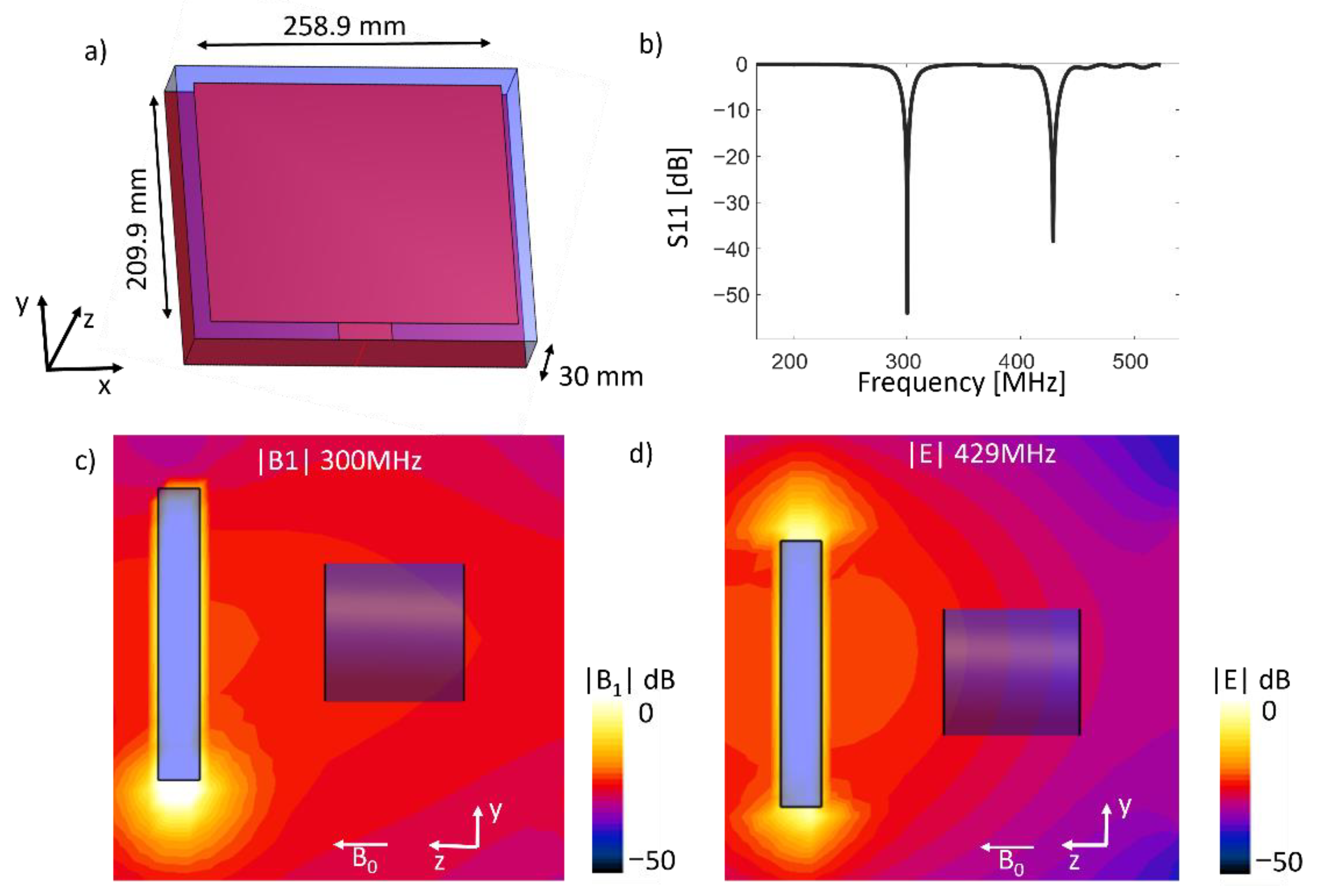
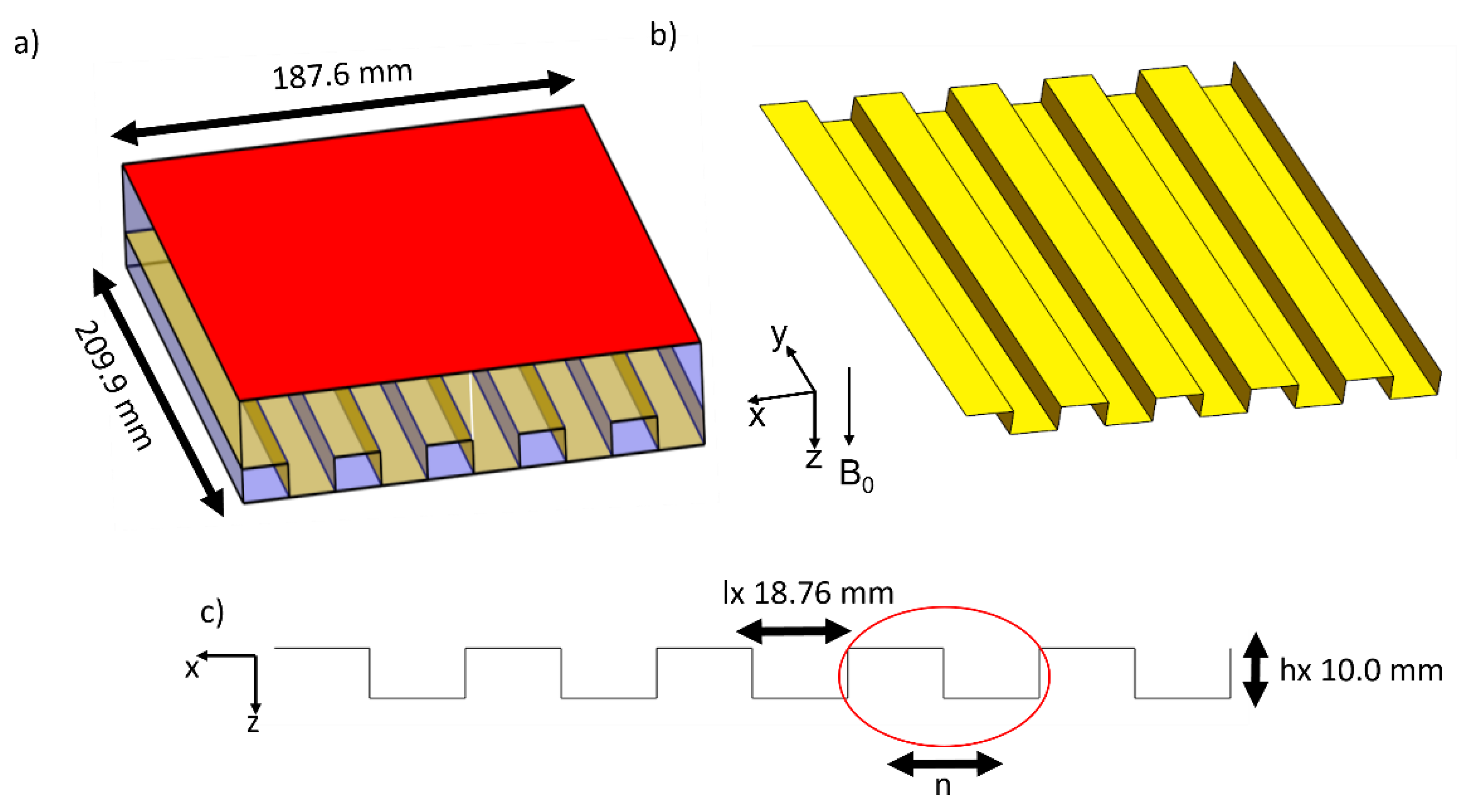

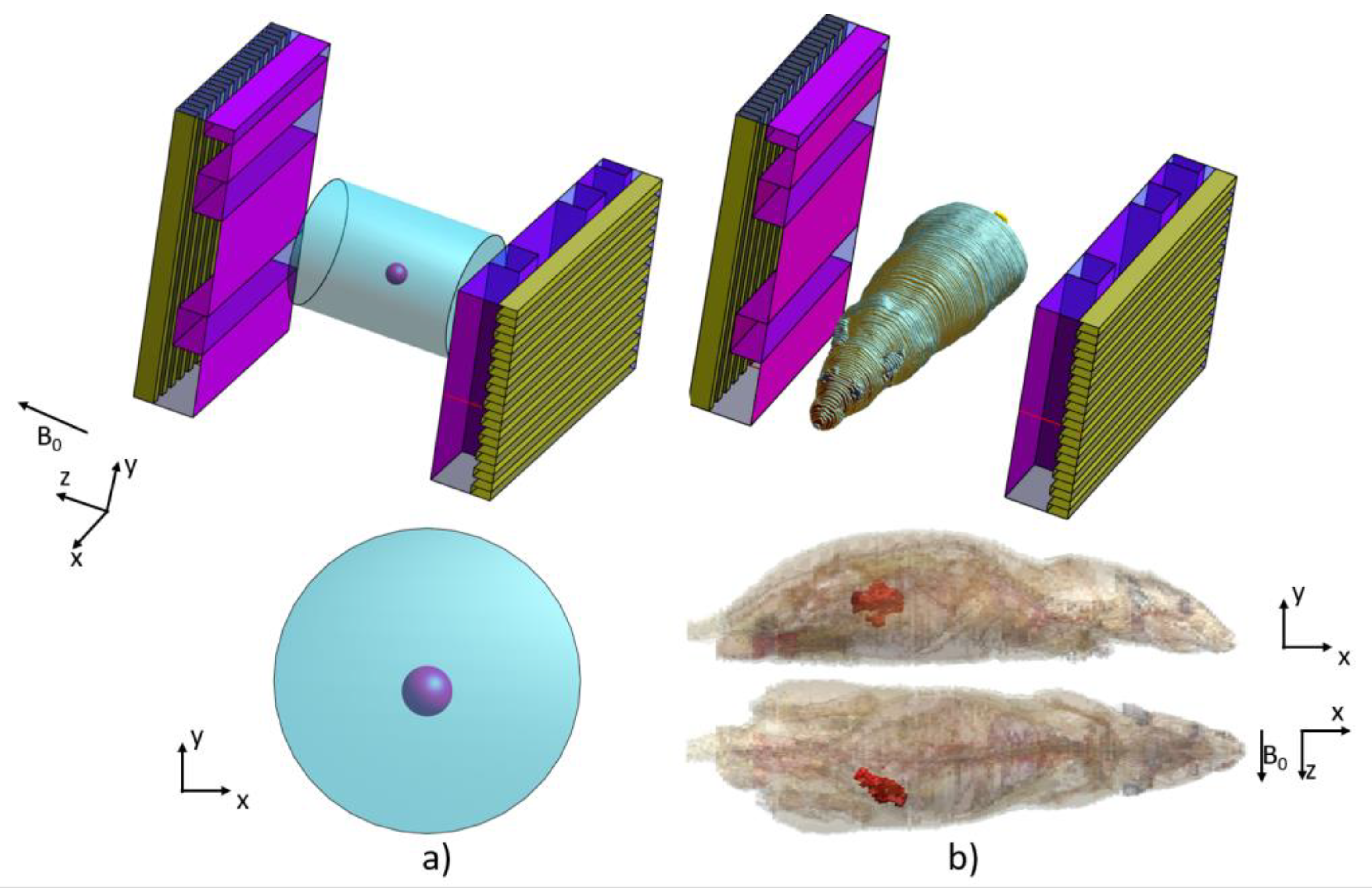
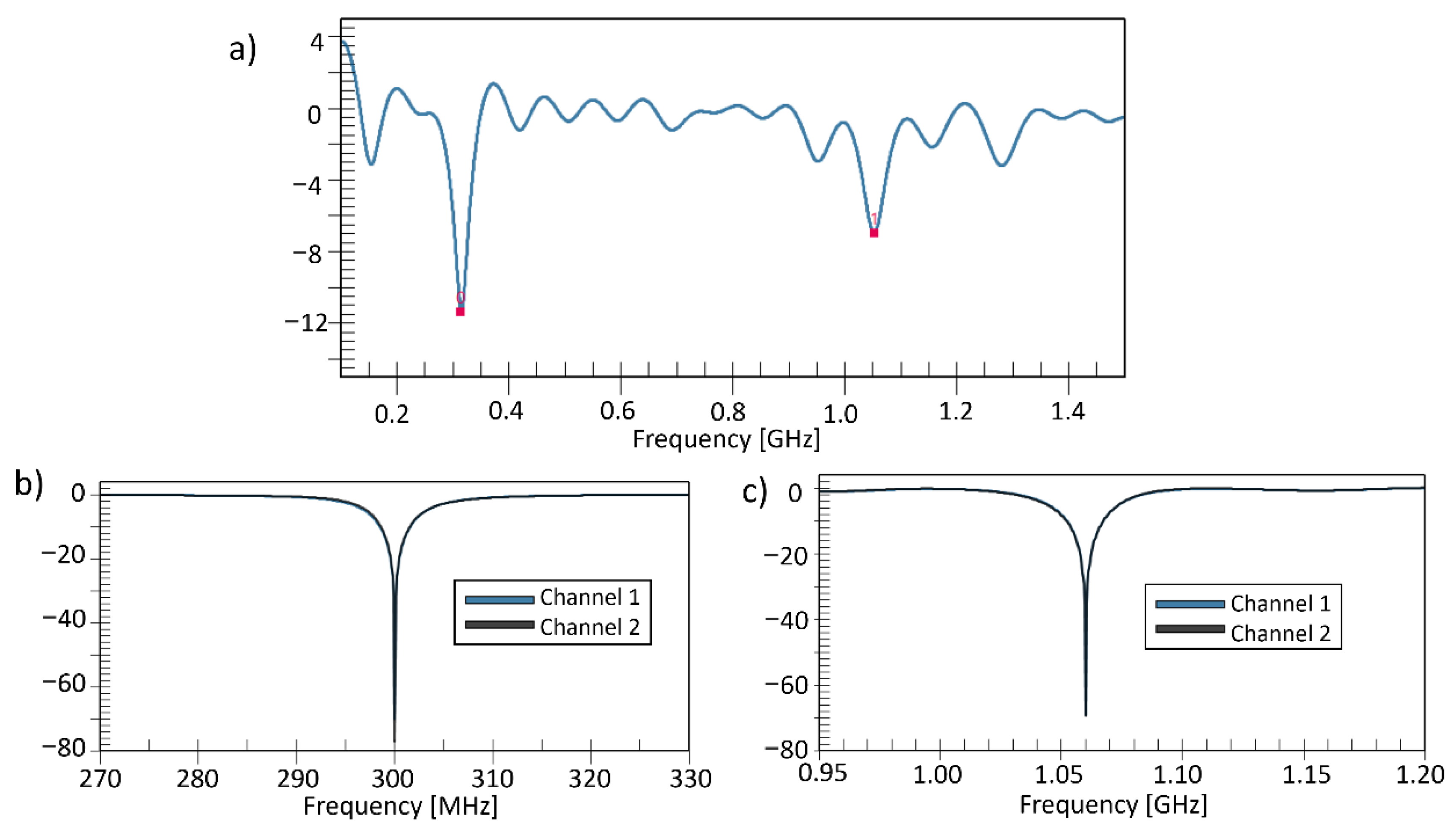
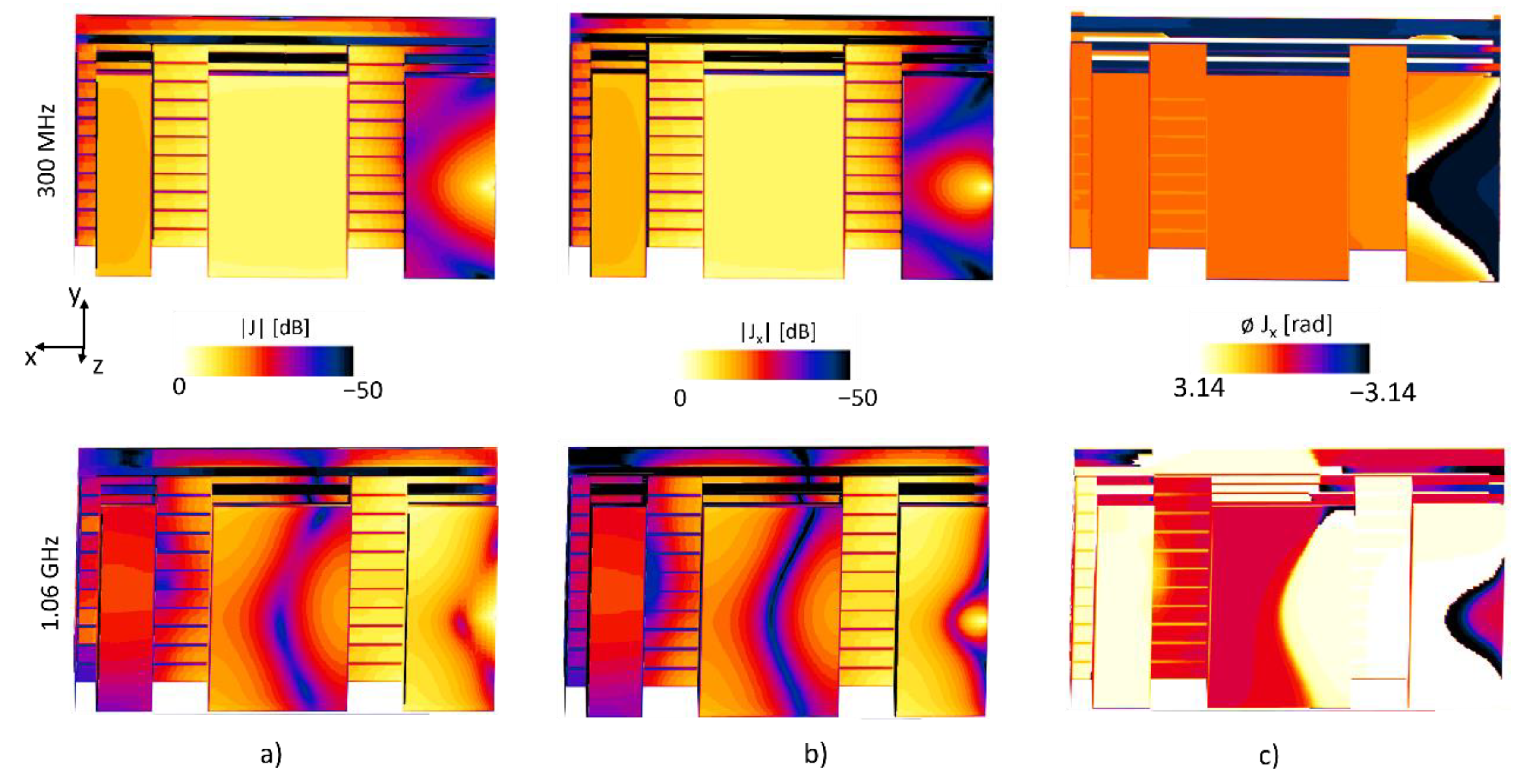
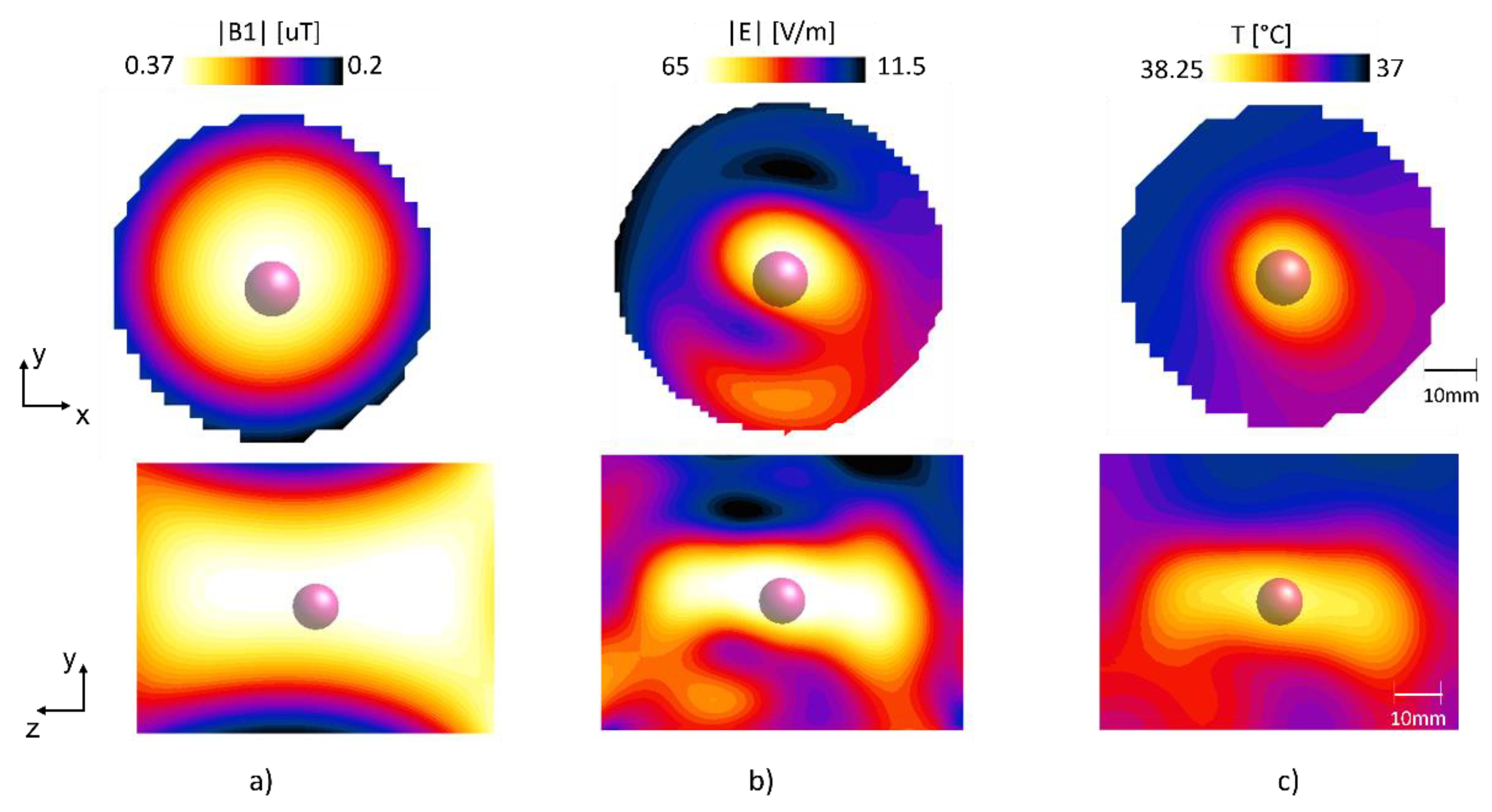

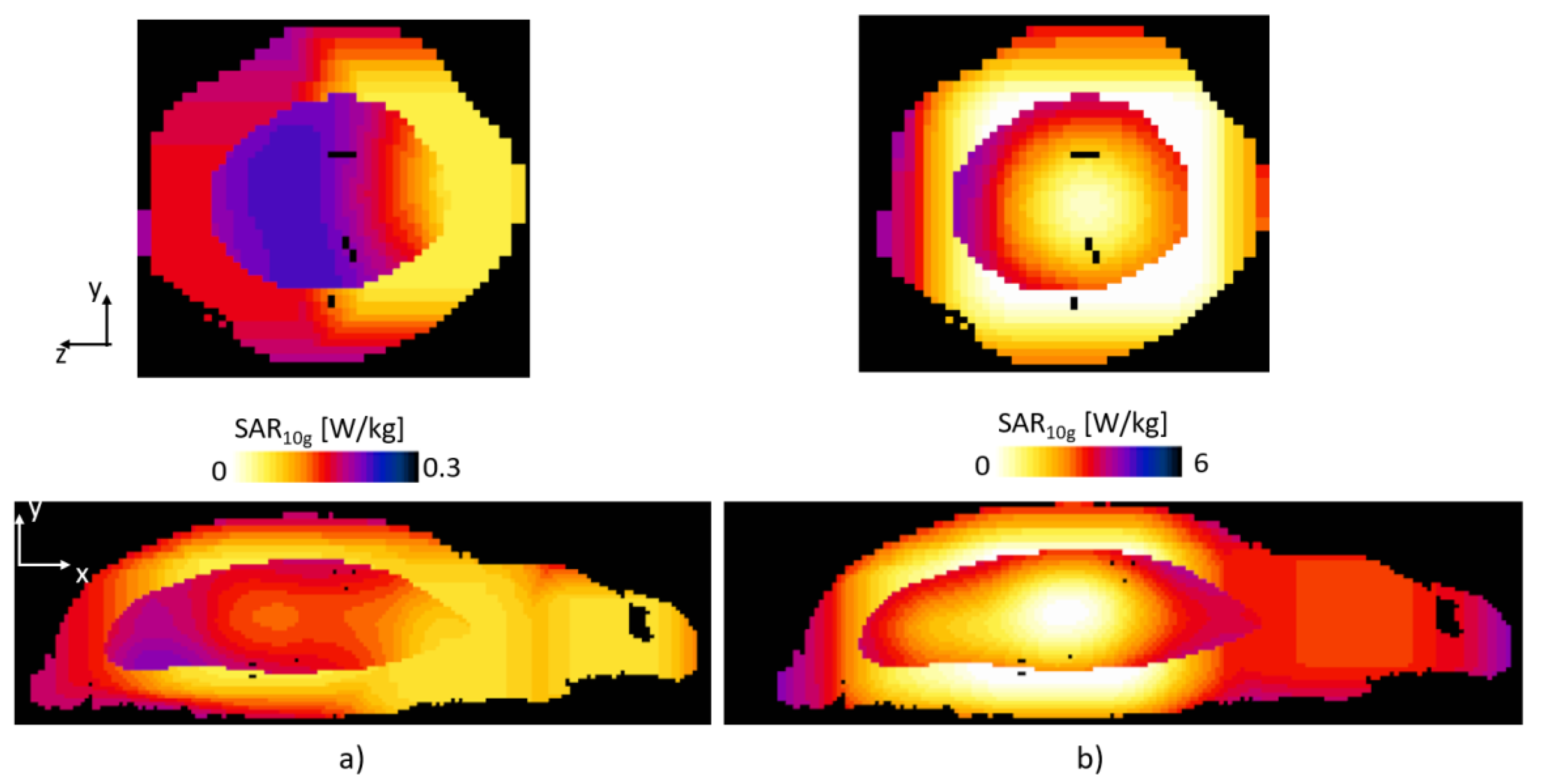
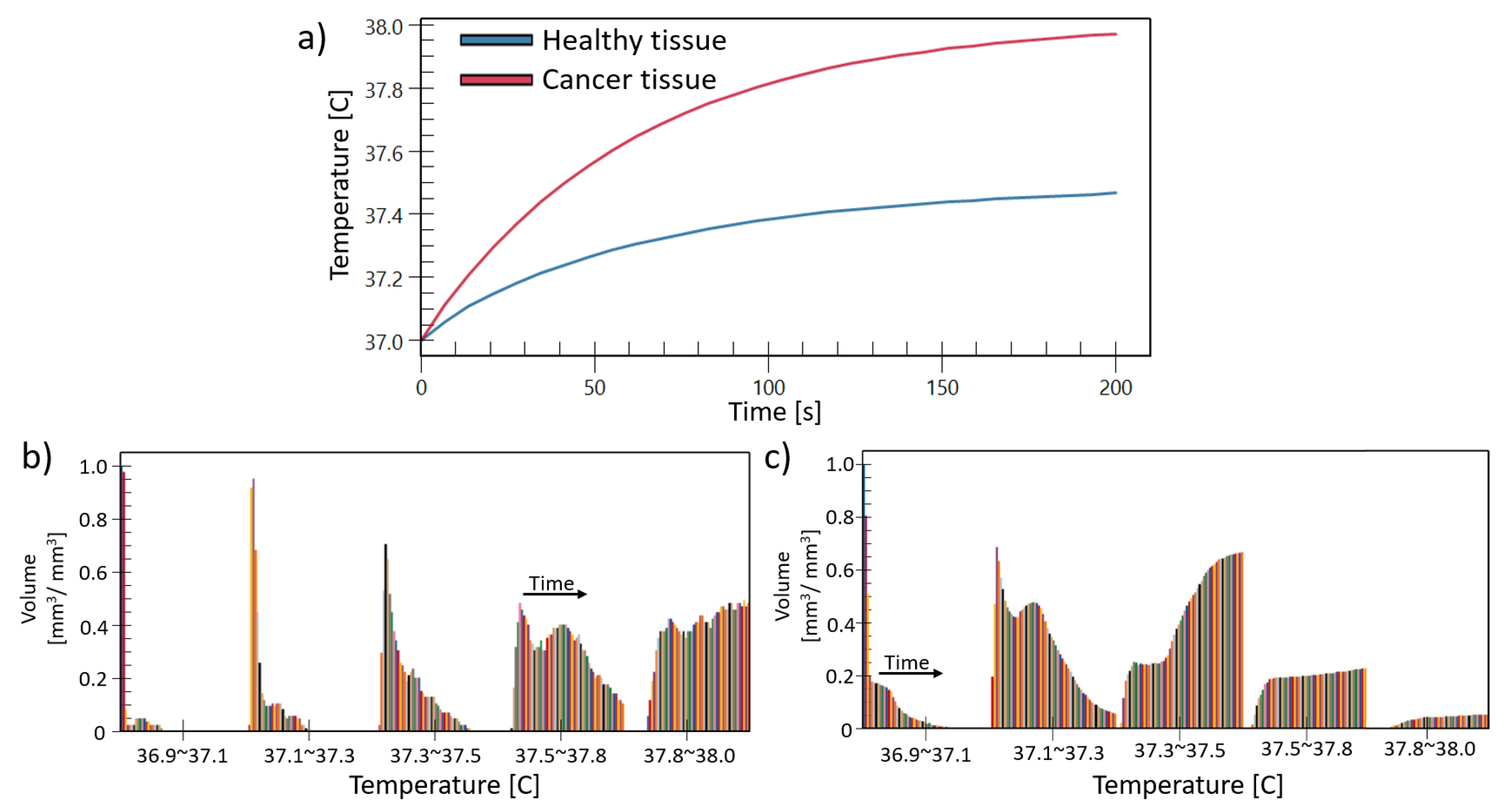
Publisher’s Note: MDPI stays neutral with regard to jurisdictional claims in published maps and institutional affiliations. |
© 2021 by the authors. Licensee MDPI, Basel, Switzerland. This article is an open access article distributed under the terms and conditions of the Creative Commons Attribution (CC BY) license (https://creativecommons.org/licenses/by/4.0/).
Share and Cite
Kim, D.; Hernandez, D.; Kim, K.-N. Design of a Dual-Purpose Patch Antenna for Magnetic Resonance Imaging and Induced RF Heating for Small Animal Hyperthermia. Appl. Sci. 2021, 11, 7290. https://doi.org/10.3390/app11167290
Kim D, Hernandez D, Kim K-N. Design of a Dual-Purpose Patch Antenna for Magnetic Resonance Imaging and Induced RF Heating for Small Animal Hyperthermia. Applied Sciences. 2021; 11(16):7290. https://doi.org/10.3390/app11167290
Chicago/Turabian StyleKim, Donghyuk, Daniel Hernandez, and Kyoung-Nam Kim. 2021. "Design of a Dual-Purpose Patch Antenna for Magnetic Resonance Imaging and Induced RF Heating for Small Animal Hyperthermia" Applied Sciences 11, no. 16: 7290. https://doi.org/10.3390/app11167290
APA StyleKim, D., Hernandez, D., & Kim, K.-N. (2021). Design of a Dual-Purpose Patch Antenna for Magnetic Resonance Imaging and Induced RF Heating for Small Animal Hyperthermia. Applied Sciences, 11(16), 7290. https://doi.org/10.3390/app11167290




